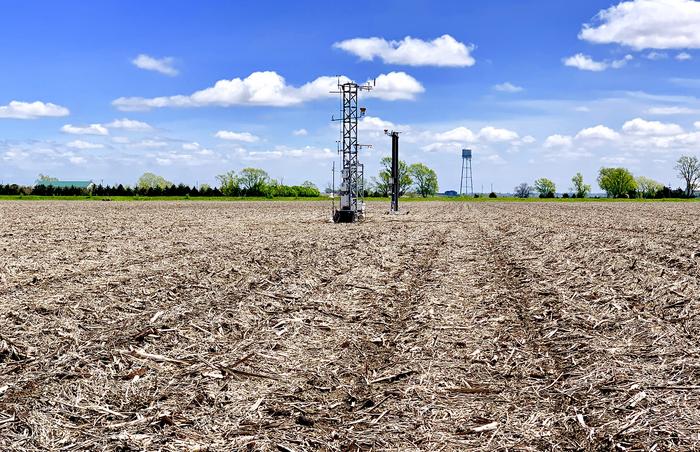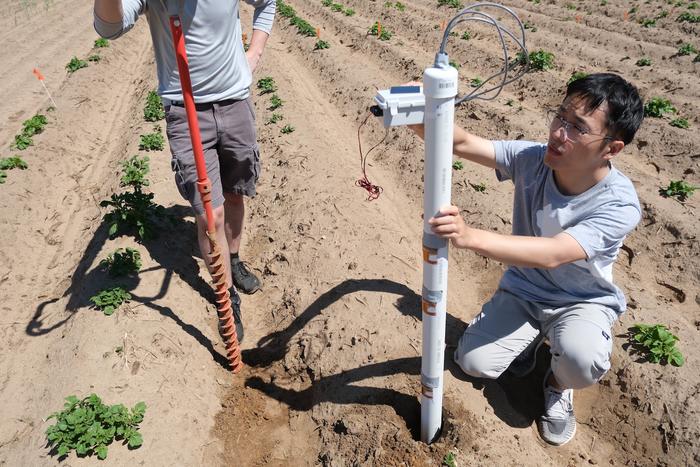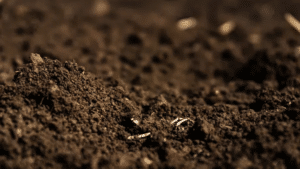Researchers study how to best use remote sensing technologies to transform plant evaluation and phenotyping in the field.
Each season, scientists, plant breeders and hired hands regularly trudge out into fields to measure crops.
They’re often looking for objective data, such as plant height, which can be measured in feet and inches — but the data they collect is often highly subjective. Even height might be recorded simply as “tall” or “short.” They might also measure more subjective traits, such as leaf greenness, the amount of serration in a leaf or the amount of ground cover the plants provide.
Two different people looking at the same plant might come up with two different measures, which is quite often the case. Other measurements such as nitrogen content, chlorophyll content or biomass might be impossible to measure accurately unless plants can be removed from plots.

is a writer based in Illinois. He has bachelor’s and master’s degrees in journalism and has worked as a reporter in Illinois, Massachusetts, Connecticut and Indiana. He was most recently digital editor of the Rockford Register Star. He has also worked as a research news writer for the College of Agriculture at Purdue University.
These evaluations are tedious, time-consuming and expensive, and it might soon be a thing of the past. Jerry Hatfield is a plant physiologist and laboratory director of the U.S. Department of Agriculture’s Agricultural Research Service National Laboratory for Agriculture and the Environment. He’s also the director of the Midwest Climate Hub in Ames, Iowa, and one of many researching remote sensing technology that could change how scientists, geneticists, breeders and others gather information needed to improve and assess crops.
“The idea is that with remote sensing, you can take a photo of a field and understand what’s happening there at that moment,” Hatfield says. “These are becoming almost standard tools for us.”
How It Works
Plant breeders and geneticists have pretty good ideas about some of the genes that will impart desired characteristics, such as drought tolerance, for instance, or higher yields. They cross plants with desirable genetic traits to create better hybrids.
Models can predict the likelihood of a line having the desired characteristics. But the new seeds still must be sown, and the plants must be studied to ensure that a particular line possesses the physical characteristics needed.
Hatfield’s research focuses on using sensors to detect spectrums of light from the visible, including infrared wavelengths that we cannot see. Combinations of different light signatures can be used to determine a plant’s physical characteristics. Hatfield says his research group has 30 to 40 indices that can be used to accurately measure plant characteristics.
Sensors can be mounted on farm machinery, platforms near crops, small aircraft or be handheld. Instead of sending manual laborers into fields many times each season to record one piece of data each time, one person could remotely collect dozens of pieces of information simply by controlling the flight path of a drone.
Jeffrey White, a research plant physiologist with the USDA-ARS who works in collaboration with the University of Arizona, has used sensors in wheat and cotton fields with better results than manual collection of data.
“Hand labor is obviously getting more and more expensive, and it’s never been that accurate,” White says. “If you send a worker out and ask them to measure plant height, but each worker has a different idea of where the top of the plant is, you don’t get good results. We’re talking about getting more data and higher quality data that’s more cost-effective.”
It’s not to say that human collection of data can’t be very good, but it has limits. If a person has been measuring leaf greenness in a field for hours, it’s quite possible the later measurements aren’t as good as the earlier simply because the worker is fatigued. Sensors, on the other hand, don’t get tired.
White also sees the opportunity to get at measurements that were otherwise quite a bit more difficult than with traditional methods. He says canopy temperature has long been known to correlate to heat tolerance, but getting accurate canopy temperature readings was never easy.
Once data is collected, it can be used to phenotype plants, or to understand how the same plants with the same genetic characteristics might respond under different environmental situations. Remote sensing could speed the process of ascertaining the genetics that would lead to crops with higher heat and drought tolerance or those needing fewer nutrients or water resources.
“The big advantage of remote sensing will be when we want to start quantifying how phenotypic responses occur,” Hatfield says. “Will the same germplasm express itself the same way under different conditions?”
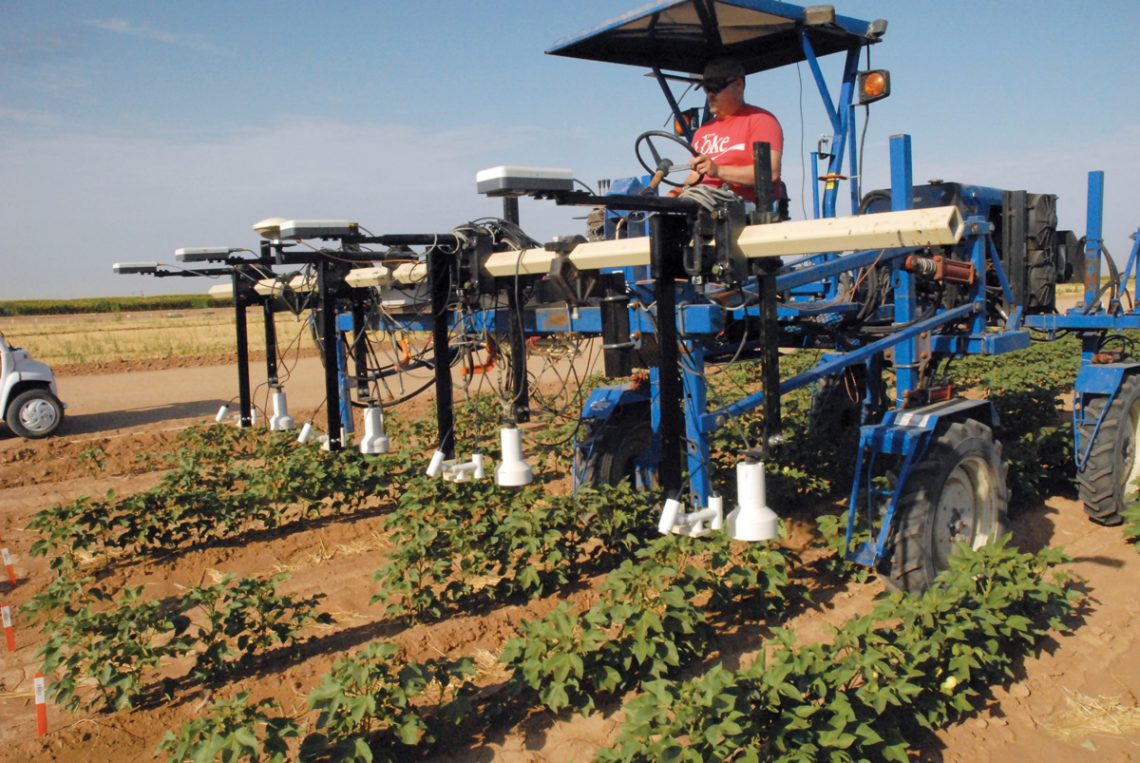
Challenges
White says there are a number of issues that scientists need to hammer out before remote sensing can become a mainstream technology.
For instance, what is important to measure, and what are the best practices to gaining accurate measurements? There are many different types of sensors available, and it’s unclear which sensors will become the standard in the field.
Will the time of day measurements are taken make a difference? Does it matter how the sensors are moved across a field — by air, farm machinery or hand?
It will also be important, White says, to geo-reference data. In other words, those collecting data need to be sure they can relate their measurements to plot-level data and ensure that the same rows of plants are being compared with each other.
Once data is collected, someone needs to decide how to use it most effectively. “We can assemble exciting amounts of data, but what do we do with it?” White asks.
With any new technology, there are trust issues. For generations, hands have done the job and helped produce significant increases in crop production, and some might not be ready to adopt high-tech methods. “Some would say I can still use my eye to determine what is best or that the system is too complex,” Hatfield explains.
But he says the difference in accuracy and the ability to take a snapshot of dozens of physical characteristics at once is where the technology becomes important.
“We have used remote sensing for a long time,” Hatfield says. “Visual assessments of plants are a form of remote sensing where we made a comparison of what we expected. For example, if we expected the leaf to be green but it wasn’t, it triggered a reaction that something was wrong. What we have been able to do with remote sensing is use different portions of the light spectrum in different combinations to relate these measurements to different plant characteristics.”
White is also concerned that remote sensing will be leaned on too heavily. He warns that just because data is easily obtainable does not necessarily make it good data if fieldwork is not done well. “If your field is a mess, if you have soil compaction or if you sowed at the wrong time, these tools will not help you,” White says.
Global Demand
The USDA estimates that by 2050, global demand for food could double. That has scientists looking to unlock genetic puzzles that would lead to crops that can handle not only a changing climate, but ones that can feed a quickly growing population.
So far, much of the promise of genetics has been in medical research, White says. “The challenges we have for food security, to protect the natural resource base and hopefully to satisfy our country’s energy needs, are so huge that we’re really going to have to transform how we do agricultural research,” White says.
An assistant professor at Kansas State University, Jesse Poland serves as associate director of the Wheat Genetics Resource Center and director of the Feed the Future Innovation Lab for Applied Wheat Genomics. He is funded through the National Science Foundation and Kansas Wheat (Kansas Wheat Commission and Kansas Wheat Alliance). He sees potential to significantly increase the number of new plant lines that can be screened each year because of remote sensing technology.
Today, wheat breeders can access 2,000 to 3,000 new plant lines each year. Remote sensing technologies have the potential to push that to 20,000 to 30,000 lines.
“The evaluation and phenotyping in the field has not undergone any high-throughput revolution like genomics has,” he says.
In other words, plant breeders still use the same labor-intensive processes to evaluate new plant lines as they have for decades. While genetics and genomics have taken huge steps forward recently, giving scientists the ability to crunch huge amounts of data, it’s still very difficult to get the data.
With wheat, Poland says breeders can create, plant and evaluate 2,000 to 3,000 new plant lines each year. But he says remote sensing could kick that number up to 20,000 or 30,000. That data helps people such as Poland improve models that guide the decisions breeders make when choosing genes they want to use in plant lines. The more plants that can be tested, the more accurate the data. “If we have really accurate, high-throughput data to put into these models, it can improve those models,” Poland says. “You can expect a lot more data from the field that can lead to excellent lines.”
The Future
Hatfield’s research focuses on improving the indices used to make physical measurements from sensor readings.
“We are evaluating a trial on corn across different locations to see what the variation is in different indices,” Hatfield says. “We have an ongoing study with different brassica species to determine how well the different lines respond to stress conditions in fall-planted and spring-planted germplasm.”
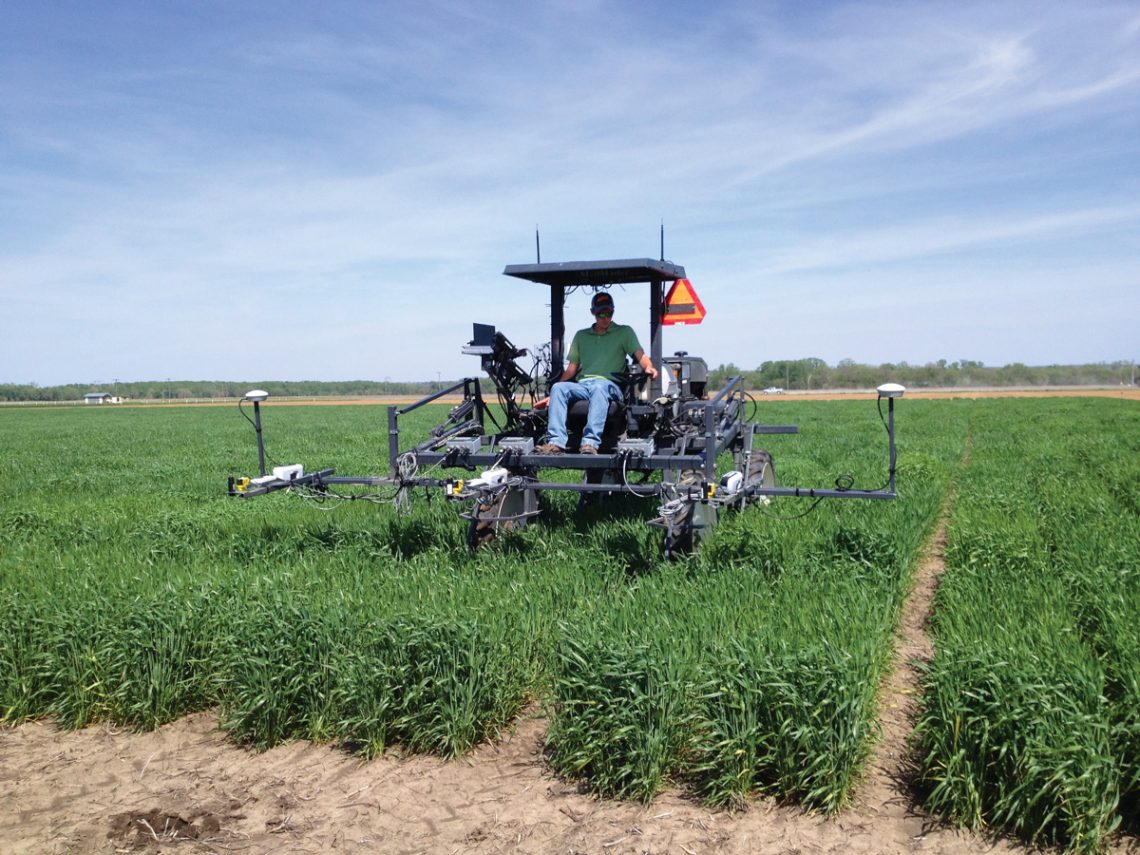
Supported through the National Science Foundation and USDA-ARS, White’s research will continue to focus on building best practices and understanding the best uses for remote sensing technology.
“I would guess that in five years, if you go to agronomy meetings, you’ll see this technology used routinely,” White says. “You’ll hear people say: ‘Why did you do those measurements by hand? The sensors are more accurate.’”



